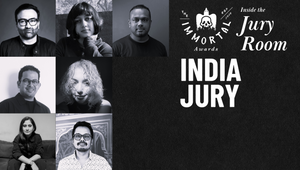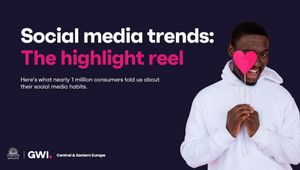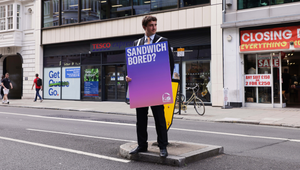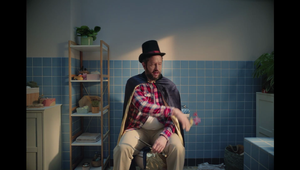
5 Minutes with… Varun Shah

The Age of AI is about to dawn - or are we already living in it? For many of us in the industry, the future has arrived. It begs the question; how has AI already changed how we work?
Navigating the intersection of creativity and AI is Varun Shah, managing director of Publicis Production India. For him, AI is already a part of content marketing.
Here, Varun discusses how Publicis Production India is harnessing AI to enhance the creative process by emphasising AI as a facilitator rather than a replacement for human creativity.
In conversation with LBB’s Tom Loudon, Varun offers a glimpse into the future of AI-enabled content and the quandaries that can arise.
LBB> As AI in content creation becomes more prevalent, the issue of compliance and rights to data arises. How does Prodigious India address these challenges to maintain ethical and legal standards?
Varun> AI is a technology tool. It is an aid to content creation, just like softwares from Adobe. As long as the data being fed into the AI is created and owned by you, you control and own the output produced by the model, giving you very specific results. As opposed to using the data available on the web and creating generic outputs. If you look at AI as a rented technology model to achieve a desired output the challenges around these standards might not occur as the input comes from you and the desired outcome is a function of the technology.
Publicis believes it is critical to balance the growth potential of AI with the demand for responsible use of these technologies.
LBB> Moving from tools to models is a significant shift in content creation. Could you elaborate on how Prodigious India facilitates this transition and what advantages it brings to content creators?
Varun> The biggest shift we realised with the rise of the platform world was that the requests of clients were going to be unique and unlimited across platforms and formats. While clients traditionally solved this by engaging with multiple partners, it didn’t solve for synergies and effectiveness of the campaign. Hence, we created a first-of-its-kind trademarked production model – SupershootsTM, which gave clients the ability to optimise and produce assets at scale from a single shoot.
Supershoots is a production model devised to drive value for the client by delivering multiple asset types across platforms from one singular shoot. With Supershoots, we are able to drive up to 45 % cost efficiency and deliver four times the number of assets from a single production schedule. We have successfully deployed this model exclusively for key clients like L’Oréal, Nivea, Skechers and Spotify.
LBB> You mentioned connecting multiple AI channels to create unique messaging. Could you provide an example of how this approach was implemented successfully and its impact on a specific campaign?
Varun> A great example of how you can use multiple AI channels to create unique messaging is our first-of-its-kind, largest AI-led campaign for Mondelez - Oreo ‘Say It With Oreo’
The campaign leveraged Generative AI and ChatGPT to produce witty responses to customers’ questions in Farhan Akhtar’s voice. To enable this, we used a celebrity to create a voice bank basis for the first time ever and developed a voice model that generates witty responses to consumer questions. It is entirely AI-enabled and does not require any human intervention after the customer asks a question when the customer receives a response. This, by far, is the most interesting feature of the campaign, allowing us to unlock the door to unlimited and fully personalised messaging at scale.
The campaign has generated 1.4 million+ responses. The resounding success of this campaign also showcases how our teams can unleash the true potential of branded communication by marrying data and creative technology to create unique experiences.
LBB> Creating a voice model based on a celebrity for the Oreo campaign is innovative. How did Prodigious India approach this unique use of AI, and what were the challenges faced during its implementation?
Varun> In a meeting with the brand team, at some point, we referred to this project as our very own version of trying to ‘land on the moon’. Much like video, audio cloning was so new to us and much of the world while we were working on the campaign. Still, figuring out the technology was maybe easier than identifying legalities.
Since there were no legal recommendations on AI globally, we had to anticipate issues and ensure guardrails were built for the brand and the celebrity. We created a core war room group that monitored, affected, and, most importantly, anticipated challenges hourly. But when you are attempting to chart a new territory, it was more exciting than challenging as we chartered together along with the creative agency and the brand.
LBB> What trends do you foresee in AI-enabled content creation, and how does Prodigious India plan to stay at the forefront of these advancements while focusing on creativity and originality?
Varun> One major trend is the increasing efficacy of AI-generated Video Content. Audio content has become true-to-life. However, video still has a gap that will subside in the near future. We believe that the growth and development of AI will also create newer roles and talent needs with a more specific skillset, and we’ve been quite early in identifying this need. We think of AI as technology that will arm creativity and enable more ambition than ever before. We are continuously evolving and educating ourselves on the adoption of multiple AI tools into the production ecosystem. We need to now look at production as a production technology industry to prepare ourselves for what lies ahead.















